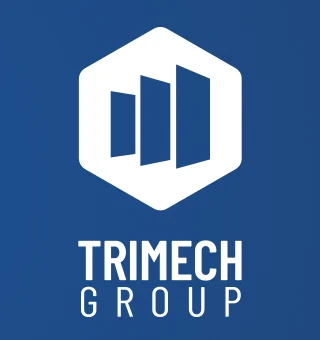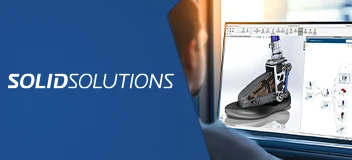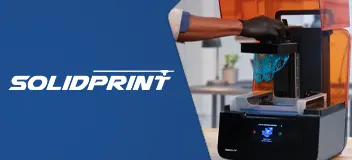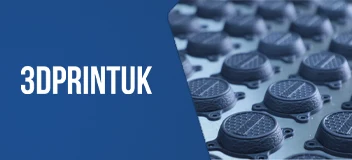Geometric Dimensioning and Tolerancing Fundamentals Course Overview
This goal of this course to help you understand and interpret the fundamentals of Geometric Dimensioning and Tolerancing (GD&T). It is based on the ASME Y14.5-2018.
By definition, GD&T establishes uniform practices for stating and interpreting dimensions, tolerancing, and related requirements for use on engineering drawings and in related documents.
Why take this course
GD&T is essential to ensure functional information and design intent from the assembly to its individual parts. This insures accurate fitting assemblies and spare parts regardless of where they are manufactured.
Designers, toolmakers, inspectors and project managers will greatly benefit from GD&T knowledge.
What the course covers
Our Geometric Dimensioning and Tolerancing course covers the fundamentals and principles of the ASME Y14.5-2018 GD&T standard. The course focuses on the geometric characteristic symbols explaining in detail each symbol, feature control frames, different modifiers and how they affect tolerancing when placed in the feature control frame.
The course also goes into depth on datums and datum reference frames, partial datums and datum target points. You will be exposed to methods of inspection for the characteristics symbols, composite feature control frames and design exercises. The course is delivered with a combination of principles, exercises and drawing examples from an instructor with professional ASME standing and over 20 years of practical experience.
Geometric Dimensioning and Tolerancing Fundamentals Course Requirements & Benefits
Understand the course requirements and the skills you will acquire after completing the GD&T course
"The instructor was from the same background as myself and used examples representative of what is done throughout our workplace. He was confident, comfortable and knew his material. I will be able to create improved prints that indicate/ instruct what is required will reduce re-work and scrapped parts. More accurate and complete prints should reduce assumptions made by the machinists."
— Chris Lishman, Armo-Tool Ltd.
"I liked how GD&T works, and it has very practical applications to communicate fit form and function on drawings. I hope to see this used more at my work to cut down on the hand-written notes we currently use, and aid in our shop floor understanding of what the engineers were thinking as they created the parts."
— Travis Boyd, Armo-Tool Ltd.
"As a new topic to me it was very easy to pick up and remember. The GD&T Fundamentals course helped me to understand the true function of the part and its relationship to mating surfaces. The instructor was able to carry the course at an excellent speed leaving students enough time to grasp the concept."
— Steven Cargnello, Marsh Brothers Aviation.
— Paul Bolduc, Bend-All.
"Well organized course, taking it step-by-step. The instructor answered the questions completely and was able to keep the course interesting despite the tough subject."
— Kevin Lowry, TMI.
"The instructor was very knowledgeable and clearly passionate about the subject matter. This will help greatly with checking our purchased parts."
— Alexandre Giles, Multimatic Manufacturing.
"Enthusiastic instructor. Small class, solid training manual. Need GD&T to do my GR&R Studies. Oh and an A+ Coffee Machine!"
— Peter Ngyen, Multimatic Manufacturing.
"My overall knowledge of GD&T has vastly improved. I will be able to look at drawings and fully understand them."
— Jonathan Koot, Exco Engineering.
"Small class made for a pretty thorough learning experience. Very knowledgeable and personable instructor."
— Graham Jokic, XL Tool.
"Very good instructor with expert knowledge, and was able to answer all the questions I had. Good discussions with real world examples. The small class size provides the opportunity for question and answers sessions."
— Warner Wong, L3-Wescam.
Geometric Dimensioning and Tolerancing Fundamentals Lessons
The following lessons are included in the course
- Identify the benefits of Geometric Dimensioning and Tolerancing.
- Identify the geometric characteristic symbols used in GD&T and understand their meaning.
- Interpret feature control frames and apply them on drawings.
- Interpret and apply modifiers in feature control frames and how they affect the geometric tolerance specified.
- Interpret Datum Reference Frames illustrating primary, secondary, and tertiary datums.
Lesson 1: Introduction
- Introduction
- Benefits of Geometric Dimensioning & Tolerancing
- Co-ordinate Tolerancing Vs Diametrical Tolerancing
- Types of Dimensions
Lesson 2: Characteristic Symbols
- Characteristics Symbols
- ASME Y14.5-2018
- Geometric Characteristics and their tolerance zones
- Form Tolerances
- Straightness (of a flat surface)
- Straightness (of an axis)
- Flatness
- Circularity or Roundness
- Cylindricity
- Profile tolerances
- Profile of a line
- Profile of a surface
- Orientation tolerances
- Angularity
- Perpendicularity
- Parallelism
- Location tolerances
- Position
- Concentricity
- Symmetry
- Runout tolerances
- Circular runout
- Total runout
Lesson 3: Feature Control Frames
- Feature Control Frame Breakdown
- Placement of Feature Control Frames on Drawings
- Feature Control Frame Exercise
- Placement of Datums
- Placement of Datums ASME Y14.5-2018
- Qualifying Datums vs Designated Datums
- Feature Control Frame Exercise #2
- Placing Feature Control Frames on drawings Exercise
Lesson 4: Modifiers
- Maximum Material Condition MMC
- Virtual Condition
- Positional Callout illustrating the effects of MMC
- Straightness Callout illustrating the effects of MMC
- Positional tolerance of a slot in MMC
- Bi-directional Positional Tolerance in MMC
- Simultaneous Requirement
- Interpreting Positional Diametrical Tolerance Zone in MMC
- Least Material Condition (LMC)
- Virtual Condition
- Least Material Condition Exercise
- Regardless of Feature Size (RFS)
- Complete list of modifying symbols
- Projected Tolerance Zone
- Established Rules
- Review Exercise
- Understand the function of datum targets and partial datums.
- Discuss methods of inspection for the different geometric characteristic symbols.
- Recognize composite feature control frames and illustrate how to interpret them on drawings.
- Interpret different examples of GD&T applications from various drawing examples.
Lesson 5: Inspection Methods
- Flatness
- Straightness of a Flat Surface
- Straightness of an Axis (Relatively Round)
- Straightness of an Axis MMC
- Circularity or Roundness of a Cylinder
- Cylindricity of a Cylinder
- Inspection Methods Exercise (Form Tolerances)
- Perpendicularity of a Surface
- Perpendicularity of a Cylindrical Feature in MMC
- Angularity of a Surface
- Parallelism of a Surface
- Parallelism of a Cylindrical Feature at RFS
- Inspection Methods Exercise (Orientation Tolerances)
- Profile of a Line
- Profile of a Surface
- Profile of a Surface vs Parallelism
- Additional Considerations with Profile Tolerance
- Circular Runout
- Total Runout
- Runout – Circular for Squareness
- Concentricity
- Symmetry (non round features)
- Inspection Methods Exercise - Summary
Lesson 6: Datums
- Datum Referencing
- Partial Datums
- Datum Targets
- Datum Reference in a MMB or LMB Condition
- Datum Exercise
Lesson 7: Positional Charts
- Diametrical tolerance VS plus / minus tolerance
- Radial Positional Chart Exercise 1
- Radial Positional Chart Exercise 2
Lesson 8: Composite Feature Control Frames
- Exercise 1
- Exercise 2
- Exercise 3
- Exercise 4
- Exercise 5
- Exercise 6
Annotations
Training Methods
Choose the training method right for you

Group/Public Training
Receive training as a group (limited amount per class) from certified instructors using vendor approved training content and methodologies.
Training is delivered either live online or in a traditional classroom environment.
Advantages
- Cost effective training method.
- More effective than video based training, with videos learners are often not as focused on the training and skip exercises.
- Learn more through group questions and feedback.

Private Training
This style of flexible training is perfect for teams or individuals who are faced with a specific challenge and require personalized courses with on-the-job coaching.
Training is available live online, in-person classroom or onsite at your location.
Advantages
- Use our state-of-the-art mobile classroom at your facility.
- Bring your team up to a consistent level of knowledge by having them take the same training at the same time.
- Benefit from flexible scheduling options.
Upcoming Training Courses
Choose a scheduled Geometric Dimensioning and Tolerancing Fundamentals course
Are you using SOLIDWORKS to its full potential?
Enhance your skills and capabilities with a SOLIDWORKS Training Assessment from TriMech.













